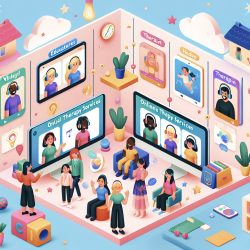The COVID-19 pandemic has significantly altered how group therapy is conducted, shifting from face-to-face (FTF) interactions to virtual video groups. The research article, "Lost in the matrix: Dialectical tensions in facilitating virtual video groups during COVID-19 pandemic," explores the unique challenges and opportunities that arise in this new context. For practitioners at TinyEYE, understanding these findings can enhance the effectiveness of virtual group therapy.
Key Findings
The study identifies five main themes that encapsulate the dialectical tensions in virtual group facilitation:
- Intimacy and Intrusion: The domestic space both enhances and hinders relational processes.
- Sharp Transitions: The instability of virtual presence creates sharp transitions from presence to absence.
- Fragmented Processing: Despite abundant information, processing in the virtual space is fragmented.
- Sterility and Clarity: Virtual communication can be sterile yet clear, affecting group dynamics.
- Hyper-aware Self: Facilitators and participants are hyper-aware of themselves, affecting emotional presence and participation.
Practical Implications
Here are some practical steps to address these challenges:
- Embrace Multiplicity: Accept the permeable boundaries between personal and professional lives. Encourage participants to bring their domestic contexts into the group.
- Manage Information Overload: Develop a mechanism for decision-making to navigate the sea of information effectively.
- Address Discontinuity: Acknowledge the discontinuous nature of the virtual space and adopt strategies to manage it, such as using breakout rooms for smaller, more intimate discussions.
- Foster Spontaneity: Create informal spaces within the virtual setting to facilitate spontaneous interactions.
- Utilize Hyper-awareness: Use the hyper-awareness created by the camera as an opportunity for self-reflection and improvement.
Encouraging Further Research
While the study provides valuable insights, further research is needed to fully understand the complexities of virtual group facilitation. Practitioners are encouraged to explore these areas to continue improving the effectiveness of virtual therapy.
To read the original research paper, please follow this link: Lost in the matrix: Dialectical tensions in facilitating virtual video groups during COVID-19 pandemic.










